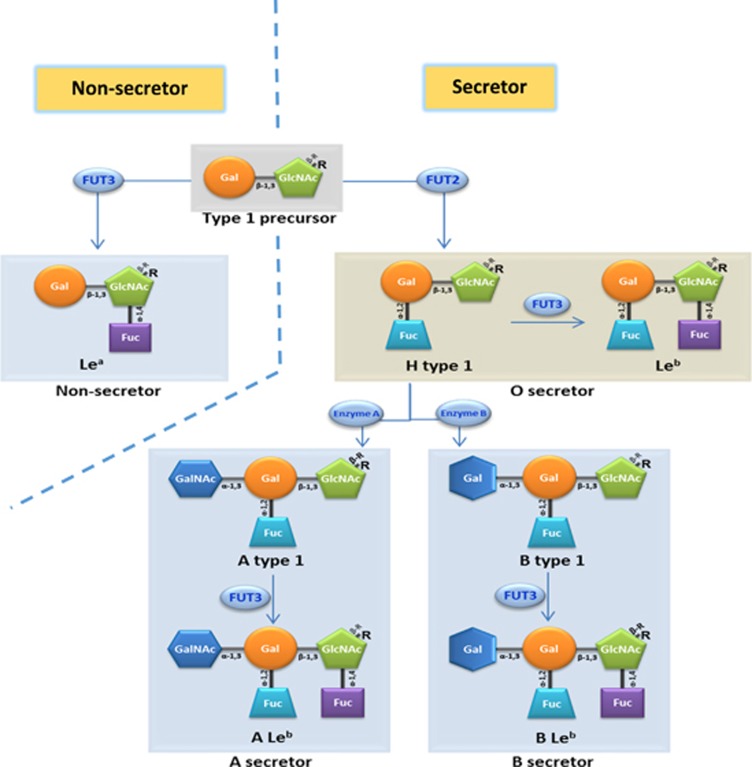Figure 1.
Schematic biosynthesis pathways of human type 1 histo-blood group antigens (HBGAs). Starting with the type 1 precursor (Galβ1-3GlcNAcβ-R), a Lea antigen is formed by adding a Fuc to β-GlcNAc via a α-1,4 linkage by α-1,3/4-fucosyltransferase (FUT3). A Fuc can also be added to the β-Gal of the precursor via a α-1,2 linkage, forming H antigen by α-1,2-fucosyltransferase (FUT2). The H antigen can be further extended by adding another Fuc to β-GlcNAc via α-1,4 linkage to form a Leb antigen via FUT3. Under the action of an N-acetylgalactosamine transferase (A enzyme), a GalNAc is added to the β-Gal of the H antigen via a α-1,3 linkage, forming an A antigen that can be further developed into an ALeb antigen by accepting a α-1,4 Fuc through FUT3. Similarly, through galactosyltransferase (B enzyme), the β-Gal of the H antigen accepts a α-1,3 Gal, forming a B antigen that can develop into the BLeb antigen. Individuals with the H, Leb, A, B, ALeb and/or BLeb antigens are secretors. A and/or B secretors may also carry small amount of H and Leb antigens as intermediates. In contrast, individuals without an active FUT2 do not synthesize H antigen and the downstream A, B, A/B, ALeb and/or BLeb antigens are non-secretors. The syntheses of the type 2 HBGAs follow similar pathways starting with the type 2 precursor (Galβ1-4GlcNAcβ-R), resulting in Lex, H type 2, Ley, A type 2, ALey, B type 2 and/or BLey antigens. l-fucose (Fuc); d-galactose (Gal); N-acetylgalactosamine (GalNAc); N-acetylglucosamine (GlcNAc); backbone of HBGAs (R).

